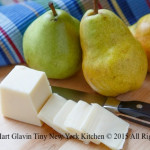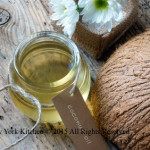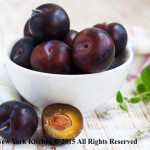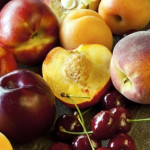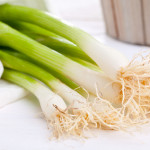5 Reasons To Love Coconut Oil
Coconut oil is an edible oil extracted from the kernel or meat of mature coconuts harvested from the coconut palm. Because of its high saturated fat content, it is slow to oxidize and is resistant to spoiling.
1. Butter Replacement. Coconut oil can replace butter, which is great for vegans, who up until now have had few good choices when converting non-vegan recipes that contain butter.
2. Great For Athletes. Coconut oil is great for athletes because it converts to energy faster than many other fats, making it a smart addition to workout snacks.
3. Weight Loss. Coconut oil may help you slim down. A study undertaken a few years ago suggests that coconut oil may help you lose weight, when consumed in small quantities instead of other fats.
4. Sautéing. Coconut oil is great for sautéing. Use coconut oil occasionally instead of olive oil to add a subtle flavor that is delicious in tropical or Indian recipes.
5. Good Cholesterol. Coconut oil boosts good cholesterol. While coconut oil is full of saturated fat, about half is medium-chain fatty acids, which seem to help raise HDL (good) cholesterol. Coconut oil is still high in fat, however, so consume in moderation.
“Work With What You Got!”
© Victoria Hart Glavin Tiny New York Kitchen © 2015 All Rights Reserved
5 Ways To Make The Most Of Plums
RAW
Pit and thinly slice for Spinach Salad with Plums and Goat Cheese
BAKED
Stone fruit crumbles, cobblers and crisps are hallmarks of late summer. Swap in plums for other stone fruits in your favorite recipes.
ROASTED/GRILLED
Roasting and grilling fruit brings out its inherent sweetness. Serve with crème fraiche, ice cream, or yogurt.
CANNED
Preserve plums by making jam, chutney, salsa, or a spicy sauce to enjoy the taste of summer year round.
DRIED
Dry slices in a low temperature oven for a sweet, chewy on the go snack, which are perfect for packed lunches.
“Work With What You Got!”
© Victoria Hart Glavin Tiny New York Kitchen © 2015 All Rights Reserved
Soaking Wood Chips In Beer For Grilling
Here is a secret. You can turn your gas or charcoal grill into a smoker by just using beer. Soak wood chips in beer before you fire up the grill. The beer will be imparted into your smoked food.
Soak wood chips in beer for at least 30 minutes. The wet wood chips will produce more smoke and flavor. Drain wood chips and sprinkle a handful of soaked chips over the hot coals when they are ready and covered with a white ash. Put the lid on the grill and wait for the smoke to start to pour out of the grill. Then place the food on the cooking grate.
For charcoal grills, position it so that the vent is on the side of the grill opposite the charcoal. This will draw the heat and smoke over the food and out of the vent.
For gas grills, when using wood chips with a gas grill, follow the smoker box instructions for best results.
A couple of handfuls of wood chips will provide 10 to 20 minutes of smoke, depending on how hot the fire is.
Keep the grill lid closed as much as possible to allow the smoke to fully permeate the food.
Always use heat-resistant barbecue mitts or gloves when operating your grill.
“Work With What You Got!”
© Victoria Hart Glavin Tiny New York Kitchen © 2015 All Rights Reserved
5 Ways to Make the Most of Seasonal Stone Fruit
Ripen: Ripen peaches, nectarines and apricots at room temperature. Once ripe, they can be refrigerated for just a few days to help keep them at their best.
Speed Up: Speed up the ripening process by placing fruit in a brown paper bag on the counter, checking a few times each day.
Can: Preserve stone fruits by canning them (make jam, syrup or salsa) to enjoy the taste of summer year-round.
Dry: Bake or grill halves or slices at 200 degrees for about 3 hours, turning every 30 minutes or so, until dehydrated yet still soft. Store in the refrigerator.
Freeze: Lightly poach halved and pitted fruit in water (sugar optional), portion and freeze for later use in smoothies, baking, desserts or fruit sauce for pancakes.
“Work With What You Got!”
© Victoria Hart Glavin Tiny New York Kitchen © 2015 All Rights Reserved
A Fish Bone In Your Throat?
If you miss a bone and don’t discover it until it’s halfway down your throat, don’t panic. Bite off a piece of bread, chew and swallow it. It will take the bone with it, out of harm’s way.
“Work With What You Got!”
© Victoria Hart Glavin Tiny New York Kitchen All Rights Reserve
Storing Baked Goods
Always allow baked goods to cool completely (preferably on a wire rack) before wrapping and storing. If they are wrapped before they are thoroughly cooled, pastries will steam, turning their nice crisp surfaces soggy and limp. The texture and flavor of most baked goods fare best when stored, well wrapped, in a cool dry location for a couple of days. However, those that are particularly high in moisture will be safest stored in the refrigerator.
“Work With What You Got!”
© Victoria Hart Glavin Tiny New York Kitchen
Ramps
If you can’t find any of those oh-so-fleeting ramps at your local farmers’ market then have no fear, as there are plenty of other onion options available this time of year. Turn to Tiny New York Kitchen’s favorites.
Scallions: A supermarket staple. They have a peppery bite that isn’t overpowering. Scallions (Green Onions) are best used chopped raw or charred in salads or as a garnish.
Leeks: Leeks have a slight garlic flavor that mellows when cooked. Braised to an almost creamy texture, they are one of the best side dishes.
Spring Onions: Spring onions are a more mature scallion with large, sweet bulbs and pungent, spicy green tops. They are excellent for roasting whole and finished with sea salt and s bit of lime juice.
Flowering Chives: These mature chives are bursting with gorgeous purple flowers that taste just like wonderful chives. Use both flowers and finely cut stems in salads.
“Work With What You Got!”
© Victoria Hart Glavin Tiny New York Kitchen
Cooking Ham
Ham is a great choice for spring gatherings. It’s simple, feeds a crowd and provides wonderful leftovers.
Keep Servings In Mind. Allow for 1/2 to 3/4 pound per serving for bone-in ham, and 1/4 to 1/2 pound per serving for boneless ham.
Before Cooking make sure to let ham sit at room temperature for approximately 1 hour.
Scoring The Skin adds to a beautiful presentation. Cut 1/4 inch deep crosswise into 1 to 2 inch squares to create classic diamond shapes.
Glaze The Ham during the final hour of cooking to avoid burning.
Keep The Flavor Going. Buying bone-in ham leaves you with the ham bone, which is great for flavoring soups and beans.
“Work With What You Got!”
© Victoria Hart Glavin Tiny New York Kitchen


